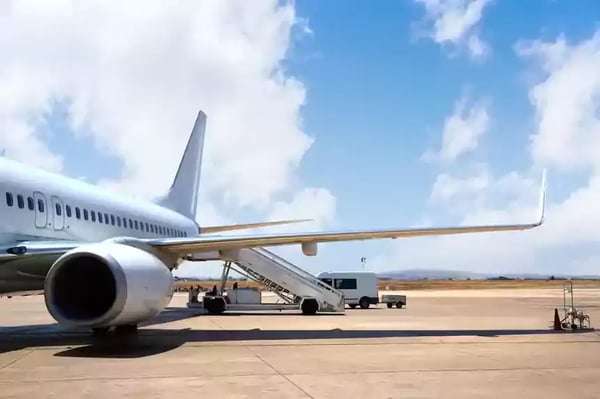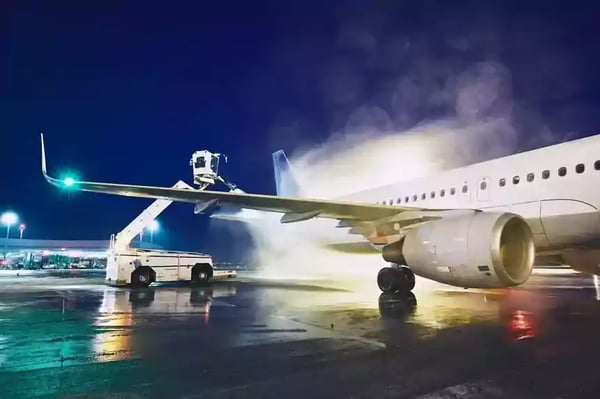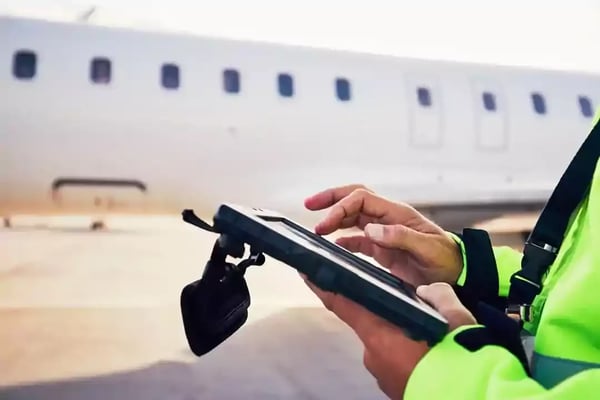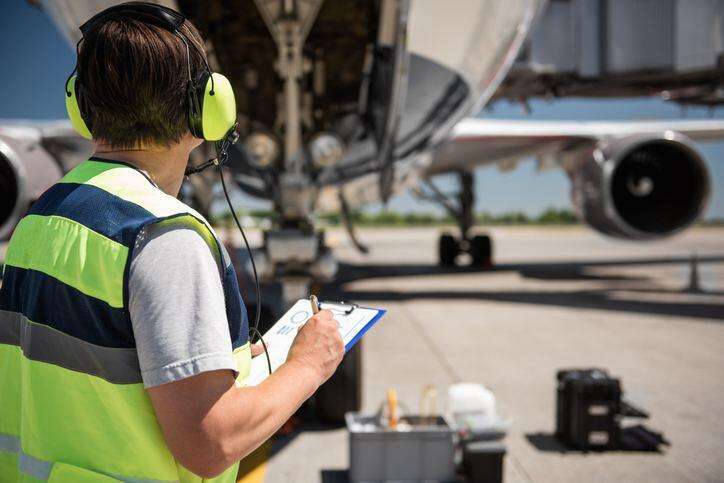
Introduction
You are lucky to get a window seat and an empty row next to you. You feel safe and are probably looking forward to a moment when you can open your laptop. But have you ever wondered what’s happening behind the curtains with that plane you are on? Who is the one preparing it for a safe and enjoyable flight? Aviation maintenance is in charge of keeping the airfleet ready, ensuring its airworthiness.
As anything nowadays, it is influenced by technology. Though aviation maintenance is highly human-dependent and requires personalized touch, a need for higher efficiency, safety, and lesser costs opened a window of opportunity for the expansion of disruptive innovations. Let’s have a closer look at technologies that are boosting growth in that industry.
Robotics and drones
Innovative Inspection with Robotics
Remember the Wall-E? This helpful robot is a new reality for aircraft maintenance. Since 2008, SR Technics has been partnering with Invert Robotics to improve aircraft maintenance processes with innovative robotic solutions. Robots have a high-resolution inspection camera that records and transmits video images that are later analyzed by SR Technics engineers. These images can be used on the tarmac and in the hangar and enable detailed repair assessment. Additional capabilities such as ultrasound and thermographic testing make the inspection process even more efficient.
Rolls-Royce’s SWARM Robots
Another great example of using robotics is Rolls-Royce. Their SWARM robots, developed in collaboration with Harvard University are only 10 mm diameter and can be installed in the center of an engine to perform a visual inspection in the hard to reach areas without the need to remove it from the aircraft.
Lufthansa Technik’s CAIRE Robot for Composite Repairs
Lufthansa Technik goes beyond inspection and uses robotic technology for repairs. The fuselage and wing structure of the aircraft is made of fiber-reinforced composites. Damage of such structures is hard to notice and repair, however a CAIRE robot manages it easily. It scans and records any defects, removes them and produces custom-build repair layers.
Digital Twinning
Digital Twinning is an advanced analytical tool, which allows cloning real systems to simultaneously function in a digital environment. Building digital twins helps to improve efficiency, maximize productivity, and predict failures. Boeing is designing digital twins to create new aircraft, run simulations and anticipate performance.
Rolls-Royce is building digital twins of engines to improve sustainability and reduce unnecessary maintenance. According to Stuart Hughes, CIO of Rolls-Royce, before they used 30 sensors that were capturing data about five times during the flight. Nowadays engines can capture hundreds of data points every second.
Big Data
Managing Data Complexity
This naturally comes down to Big Data solutions. How airlines are dealing with terabytes of data and the growing complexity of business that comes with it? In case of Rolls-Royce, they are applying a new cloud-based platform that gets data from airlines and feeds it into a Microsoft Azure data lake, later turns it into a Databricks Lakehouse and analyses with machine learning and AI tools.
Predictive Maintenance with Skywise
Another platform is Airbus’ Skywise. It is an open platform that collects large amounts of data from aircraft and performs an in-depth analysis that can help to optimize and predict maintenance. As an example, Finnair is using Skywise for predictive maintenance and confirms that a system is an effective tool in managing big amounts of data. Software solutions, such as EngineData.io work as an integration platform for such operators and successfully support them in Digital Twinning, Big Data and Blockchain.
Blockchain
Blockchain is a distributed digital ledger that consists of blocks, or records, and enables the recording of transactions across multiple computers. It is impossible to move or change occurrence without alteration of related blocks. Known for administering Bitcoin, blockchain however can be used in any industry. In aviation maintenance, transactions within the engine can be verified by authorized parties and stored as data blocks. Lufthansa Industry Solutions is promoting the Blockchain in aviation through the BC4A initiative. The idea is to use the technology for secure and transparent storage of information and documentation about aircraft across different providers, such as manufacturers or MRO (maintenance, repair, overhaul). Maintenance technicians can use this data to make decisions on replacing or repairing aircraft parts.
Another great example is the recently launched MRO Blockchain Alliance. Industry leaders, from part manufacture to smart contracts, got together to investigate how blockchain can be used to track, trace and record aircraft parts. PwC estimates show that it could save the industry US $3.5bn. That’s a huge breakthrough!
No doubt the importance of aviation maintenance is tremendous and technologies will help to advance it further. For us passengers, it means increased safety on the flight as automation is eliminating the possibility of human error. Airlines that actively implement cutting-edge technologies will become more competitive and dynamic.
Ville Santaniemi, the Senior Partner at QOCO Systems, shared his thoughts on the future of aviation maintenance and Big Data:
“Advances in aviation maintenance technologies will inevitably lead to exponential growth in the amount of data generated. Big data solutions will help to tackle challenges in utilizing the data, but finding solutions for sharing the data is equally important. Data should be shared with specialists who can extract the most value from it.”
Conclusion
The future of aviation maintenance is shaped by these technologies, which enhance safety and efficiency. By adopting advanced solutions like robotics, digital twinning, big data, and blockchain, airlines and MRO providers can improve their competitiveness and operational effectiveness.
Want to explore how MRO software underpins these transformative technologies in aviation maintenance? Check out our comprehensive guide on everything you need to know about MRO software for further insights.


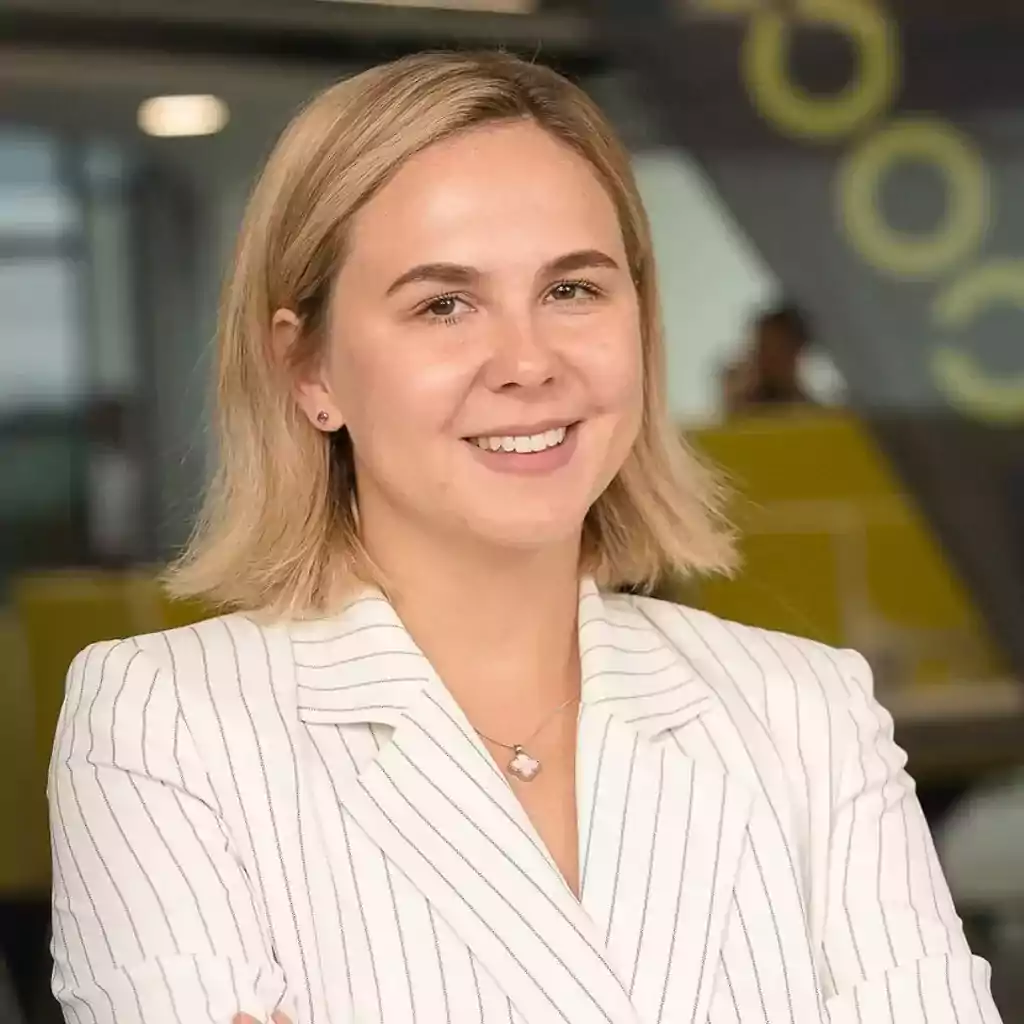 Ekaterina Vuorinen
Ekaterina Vuorinen
 If you are interested in knowing how you can improve your efficiency in maintenance operations, book a 30-minutes discovery call with us.
If you are interested in knowing how you can improve your efficiency in maintenance operations, book a 30-minutes discovery call with us.